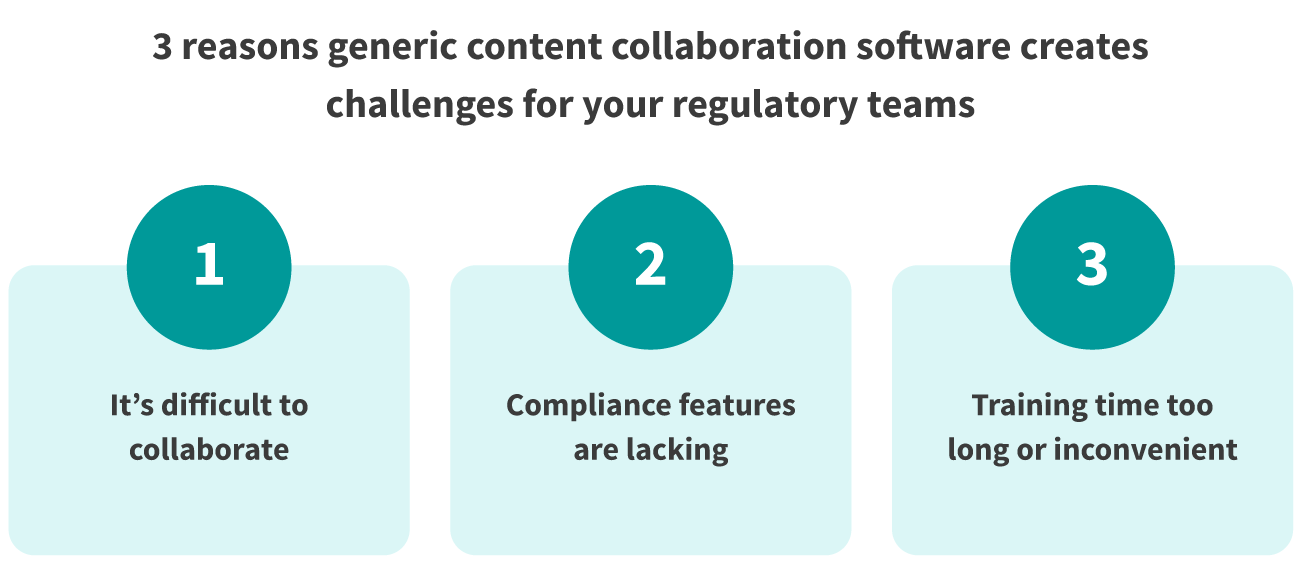But you’re not a general business. You’re a life sciences company. If you’re using generic collaboration tools for content collaboration, your process is likely not optimized or as stringent as it could be–and your regulatory and legal teams are drowning because of it.
Content collaboration is different for life sciences companies
Think of all the different types of content a life sciences company develops and utilizes: promotional content, medical/scientific content, corporate communications, internal communications, training materials, references, key claims, labeling design, technical documentation, contracts, grants, and investigator-initiated trials.
For each, you have to bring together key experts from marketing, medical, regulatory, and legal to vet the content and ensure it is on brand and compliant. Your content review software needs to follow specific regulatory standards, like being in compliance with FDA 21 CFR Part 11 and EU Annex 11 for electronic records and eSignature. In the case of an audit, you need to be able to have an easily-accessible audit trail that tracks actions performed on a piece of content.
Your content collaboration software also has to be easy to use. Regulatory and legal teams are tasked with balancing thoroughness with speed–tools that slow down the process or create unnecessary frustration simply won’t work.
Let’s review the specific pitfalls of generic collaboration tools for regulatory teams at life science companies and provide some insight on what to look for in a collaboration tool or software.



